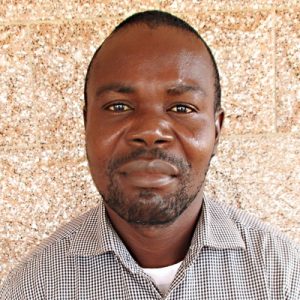The well at 32 Gbainty Bunlor is situated between the villages of Yongoroo and Gbainty Bunlor. The area is a little less developed than other villages with more patches of bushes than buildings. The most common livelihoods for the 112 people living here are fishing, farming, gardening, and petty trading. All types of vegetables and fruits are planted at the swamps that practically surround the community, so there are always different fruits and vegetables to be harvested throughout the year.
The main water source here is a hand-dug well that is slowly falling victim to global warming. The reduction in water level during the dry season each year is affecting water availability and creating long lines with arguments. This is the time of year that people all over the country are scrambling for access to safe water. People that lack an adequate water supply in their communities make their way to other communities to fetch clean water. Their intrusion causes arguments and adds to the shortage of water for other members of the more local community.
"Children suffer the most whenever there is a water crisis in any community. I find myself making more trips to the swamp than ever before, especially since it is the beginning of the dry season. The water we fetch from the stream and swamp is not clean at all," said teenager Fatmata.
The lack of sufficient water is sending community members like Fatama into the swamp to do laundry, bathe, and fetch water for cooking. Fetching water from the swamp is done early in the morning to ensure the cleanest water possible is fetched. Some people will choose to reserve the water from their turn at the hand-dug well for drinking purposes only since it is safer than the swamp water. Still, the water demand is increasing day by day, and the well water is insufficient.
"My children are all in the city attending school. The responsibility of fetching water for the home lies solely on my wife and me. Having a water well that is functioning would be a big help," said Mohamed Kamara, a local farmer.
Here’s what we’re going to do about it:
Well Rehabilitation
The well marked for this overhaul needs major work to supply adequate, clean water to the community year-round. The pump will be removed, and a hand auger will be lowered inside and powered by a drill team. This hand auger will allow the team to drill several meters deeper to hit a sufficient water column to ensure the well supplies water throughout all seasons.
As the team drills, the casing will be installed, transforming the bottom of this hand-dug well into a borehole. PVC piping will connect this lower system directly to the pump, a construction that we know will also improve the quality of water.
Once this plan is implemented, everyone within the community will have access to safe drinking water in quality and quantity, even through the dry months.
Hygiene and Sanitation Training
There will be hygiene and sanitation training sessions offered for three days in a row.
After our visit, the hygiene and sanitation trainer decided it would be best to teach community members how to build a tippy tap (a hand-washing station built with a jerrycan, string, and sticks). They will use these tippy taps for handwashing demonstrations and will also teach about other tools like dish racks and the importance of properly penning in animals.
This training will also strengthen the water user committee that manages and maintains this well. They enforce proper behavior and report to us whenever they need our help solving a serious problem, like a pump breakdown.

 Borehole Well and Hand Pump
Borehole Well and Hand Pump


































